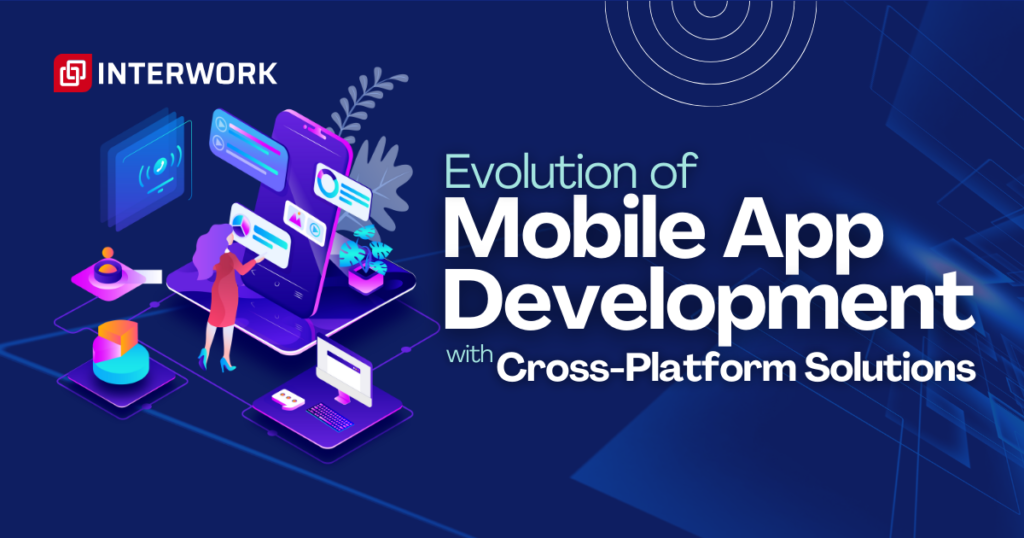Smart Manufacturing and ERP: Leveraging Industry 4.0 for Better Functionality
In the current world of dynamic industrial environment, Smart Manufacturing…
Technology partner helping businesses innovate and drive digital transformation
We understand your business better than anybody else, thanks to our domain consultants. Together with the technology experts, these domain consultants bring in years of experience to help you navigate through your technical and business challenges.
Interwork’s exclusive product approach is the cornerstone for all software engineering services that help build and design digital products using industry standards and enterprise agility frameworks. Our product strategy and management solutions, cross-channel mobile apps, DevOps transformation, and agile practices help businesses team up with us.
Embracing digital technology has never been more critical. In an era where technology is breaking down age-old barriers, businesses must create digital experiences that are consistent and connected. Our Nexgen services will enable you to win your customers’ and employees’ loyalty and trust in an environment of digital information proliferation.
Businesses can get an integrated environment with IoT, business processes, and IT consulting. Digital solutions help increase efficiency and simplify operations. Our role as a digital solution provider is to provide customers with bespoke digital experiences that enhance customer retention and open up new business prospects. At Interwork, we deliver cutting-edge services to businesses using the latest tech.
No matter where your apps exist, whether your own servers, third-party clouds, or a mix of both, we’re your one-stop cloud service provider. We can help you upgrade and migrate your apps without a hitch. As part of our cloud services, we make it easy for you to move to the cloud of your choice and keep your apps running smoothly.
You can create an omnichannel experience by connecting all your touchpoints, devices, and channels. Interwork’s strategy and UX team use the latest technology tools to develop intuitive and specific solutions for each client. A good UX design involves collaboration and iteration. We aim to make digital experiences fun and useful for clients and users.
Interwork’s end-to-end quality assurance and testing services helps enterprises manage an increasingly complex technology landscape through various solutions. Our quality assurance practices have enabled global enterprises to gain consistency, improve productivity, lower costs, and boost profits. With the help of our quality assurance frameworks, practices, and solutions, we help our clients mitigate technical and business risks.
Interwork believes that providing the target audience with a superior product or service will positively impact them. Therefore, Interwork helps startups refine their product ideas. We use technology-driven accelerators, business models, skilled resources, standardized processes, and profound experience to help startups visualize, conceptualize and execute their business requirements, turning them into profitable ventures.
No matter how well you care for your software, technical errors, system failures, faults will always occur. When that happens, don’t let it sabotage your productivity or impact your business. Reach out to us, with Interwork’s help desk and operations support offerings, we walk that extra mile to make sure your business runs 24X7.
You need the right team and the right skill set for your project to succeed. With Interwork’s IT Staffing Services, you can hire qualified and experienced resources quickly ramp up your application development initiatives. Whether you need a prototype or a full-scale enterprise app, we’ve covered you.
Interwork’s exclusive product approach is the cornerstone for all software engineering services that help build and design digital products using industry standards and enterprise agility frameworks. Our product strategy and management solutions, cross-channel mobile apps, DevOps transformation, and agile practices help businesses team up with us.
Embracing digital technology has never been more critical. In an era where technology is breaking down age-old barriers, businesses must create digital experiences that are consistent and connected. Our Nexgen services will enable you to win your customers’ and employees’ loyalty and trust in an environment of digital information proliferation.
Businesses can get an integrated environment with IoT, business processes, and IT consulting. Digital solutions help increase efficiency and simplify operations. Our role as a digital solution provider is to provide customers with bespoke digital experiences that enhance customer retention and open up new business prospects. At Interwork, we deliver cutting-edge services to businesses using the latest tech.
No matter where your apps exist, whether your own servers, third-party clouds, or a mix of both, we’re your one-stop cloud service provider. We can help you upgrade and migrate your apps without a hitch. As part of our cloud services, we make it easy for you to move to the cloud of your choice and keep your apps running smoothly.
You can create an omnichannel experience by connecting all your touchpoints, devices, and channels. Interwork’s strategy and UX team use the latest technology tools to develop intuitive and specific solutions for each client. A good UX design involves collaboration and iteration. We aim to make digital experiences fun and useful for clients and users.
Interwork’s end-to-end quality assurance and testing services helps enterprises manage an increasingly complex technology landscape through various solutions. Our quality assurance practices have enabled global enterprises to gain consistency, improve productivity, lower costs, and boost profits. With the help of our quality assurance frameworks, practices, and solutions, we help our clients mitigate technical and business risks.
Interwork believes that providing the target audience with a superior product or service will positively impact them. Therefore, Interwork helps startups refine their product ideas. We use technology-driven accelerators, business models, skilled resources, standardized processes, and profound experience to help startups visualize, conceptualize and execute their business requirements, turning them into profitable ventures.
No matter how well you care for your software, technical errors, system failures, faults will always occur. When that happens, don’t let it sabotage your productivity or impact your business. Reach out to us, with Interwork’s help desk and operations support offerings, we walk that extra mile to make sure your business runs 24X7.
You need the right team and the right skill set for your project to succeed. With Interwork’s IT Staffing Services, you can hire qualified and experienced resources quickly ramp up your application development initiatives. Whether you need a prototype or a full-scale enterprise app, we’ve covered you.



In the current world of dynamic industrial environment, Smart Manufacturing…
In today’s milieu of industrial evolution, integrating modern technologies has…
In the era following the Fourth Industrial Revolution, Industry 4.0…
In the rapidly evolving landscape of manufacturing and technology, Industry 4.0…

As a mobile app developer, staying on top of trends in application development frameworks and tools is critical to your success. The mobile landscape is constantly changing, with new devices, operating systems, and technologies emerging at a rapid pace. To build innovative apps and get them into the hands of users quickly, you need solutions that can adapt to this evolution. Recently, cross-platform development tools have become popular, allowing you to build mobile apps once and deploy them to multiple platforms. If you’re not leveraging these kinds of solutions yet, it’s time to explore how they can transform your mobile development process.
The Rise of Mobile Apps and Need for Cross-Platform Development
The rise of mobile apps has created a need for efficient cross-platform development solutions. Originally, developers had to build separate native apps for each mobile platform using platform-specific languages and SDKs. This required specialized knowledge and increased time and cost.
Cross-platform development tools allow developers to build mobile apps using web languages like HTML, CSS, and JavaScript and deploy them as native apps to multiple platforms. Frameworks like React Native, Flutter, and Xamarin provide a native user experience and reduce development time and cost by reusing up to 90% of code across platforms. However, cross-platform apps may have performance limitations and less native look and feel compared to native apps.
When selecting a cross-platform solution, consider your team’s skills, performance needs, and platform priorities. Evaluate options based on framework maturity, community support, and integration with native features. Cross-platform tools have made mobile development more efficient, but native development is best for advanced apps. With the right approach, you can leverage the benefits of both.
Top Cross-Platform Mobile App Development Frameworks
Several cross-platform mobile app development frameworks allow you to build iOS and Android apps simultaneously. Some of the top options are:
Benefits of Cross-Platform Mobile App Development Services
Cross-platform mobile app development allows you to build mobile apps that can run on multiple mobile operating systems like IOS and Android using a single codebase. This provides several advantages:
Cross-platform frameworks provide customized Uls for a consistent look and feel across different operating systems while conforming to platform-specific design standards.
Conclusion
Cross-platform solutions have changed mobile app development. With frameworks like React Native and Flutter, you can now build high-quality iOS and Android apps more efficiently using existing web development skills. As mobile devices become more sophisticated, the possibilities for innovation in this space are endless.